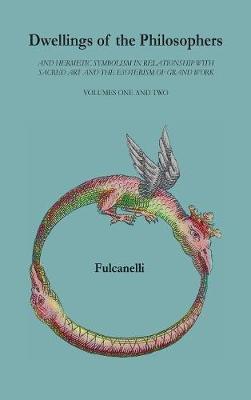Dwellings of the Philosophers

Dwellings of the Philosophers
It is believed that Fulcanelli was able to discover the philosopher's stone shortly before 1930, and it is thought that this discovery had much to do with his disappearance.
Although many speculate that Fulcanelli may have been the artist Julien Champagne, or Eugene Canseliet (who wrote several introductions to Dwellings of the Philosophers), no one knows for sure who Fulcanelli was.
Dwellings of the Philosophers is a fundamental work for alchemy scholars. It is a general treatise on alchemy, enriched by many explanations and comments on the main traditional authors texts. Also, analyzing the hermetic symbolism applied to civil constructions, Fulcanelli sheds light on many alchemical riddles.
This book analyses in depth the architectural elements and motifs of different buildings, from a modest house built in the 16th century in Lisieux (a small Norman town), the Dampierre Castle, the Holyrood Palace in Edinburgh, and several other chosen examples.
Fulcanelli clearly explains, at the beginning of his work (in History and Monument), that carvings and statues offer a truer message than the always distorted written accounts. He said: "It will therefore be explained why we prefer to see the Middle Ages, as the Gothic buildings reveal to us, rather than believing the description of historians".
Likewise, Fulcanelli offers much information about the operations and procedures of the alchemical work, analyzing and unveiling the allegories used by many writers of hermetic art to veil the knowledge from those who are not deserving of it.
PRP: 372.00 Lei
Acesta este Prețul Recomandat de Producător. Prețul de vânzare al produsului este afișat mai jos.
334.80Lei
334.80Lei
372.00 LeiLivrare in 2-4 saptamani
Descrierea produsului
It is believed that Fulcanelli was able to discover the philosopher's stone shortly before 1930, and it is thought that this discovery had much to do with his disappearance.
Although many speculate that Fulcanelli may have been the artist Julien Champagne, or Eugene Canseliet (who wrote several introductions to Dwellings of the Philosophers), no one knows for sure who Fulcanelli was.
Dwellings of the Philosophers is a fundamental work for alchemy scholars. It is a general treatise on alchemy, enriched by many explanations and comments on the main traditional authors texts. Also, analyzing the hermetic symbolism applied to civil constructions, Fulcanelli sheds light on many alchemical riddles.
This book analyses in depth the architectural elements and motifs of different buildings, from a modest house built in the 16th century in Lisieux (a small Norman town), the Dampierre Castle, the Holyrood Palace in Edinburgh, and several other chosen examples.
Fulcanelli clearly explains, at the beginning of his work (in History and Monument), that carvings and statues offer a truer message than the always distorted written accounts. He said: "It will therefore be explained why we prefer to see the Middle Ages, as the Gothic buildings reveal to us, rather than believing the description of historians".
Likewise, Fulcanelli offers much information about the operations and procedures of the alchemical work, analyzing and unveiling the allegories used by many writers of hermetic art to veil the knowledge from those who are not deserving of it.
Detaliile produsului









